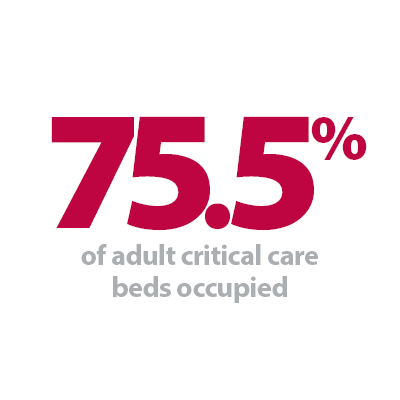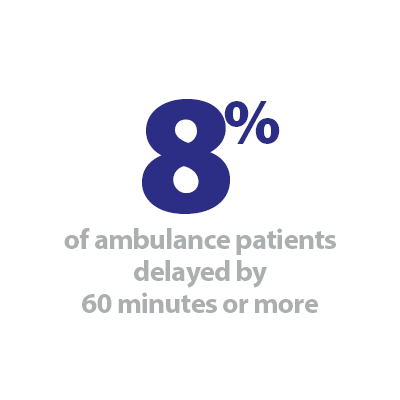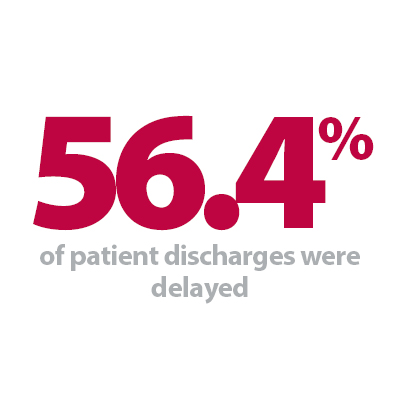


Today we saw the eleventh week of the winter sit reps published by NHS England and NHS Improvement. Although the number of COVID-19 cases continues to fall, levels remain considerably higher than the same time last year.
Recent data (16 February) reported a total of 42,756 cases in England, which is down by 27.8% since the previous week and considerably lower than levels seen at the start of the year (73.7% fewer cases). There were 1,132 patients admitted into hospital with COVID-19, a decrease of 8.3% since last week. The number of patients in hospital with COVID-19 and the number of patients in mechanical ventilation beds has also fallen (by 11.4% and 15.1%, respectively).
The reduction in COVID-19 hospital activity is encouraging; however, the recent winter sit reps continue to highlight further pressures trusts are facing.
Key headlines from winter sitreps week 11 (7 – 13 February):
- There were no A&E closures again this week, however A&E diverts have increased by 77% to 23 (5 more than a year ago).
- The ambulance sector continues to feel increased pressures with more patients arriving by ambulance this week (0.6% more). Patient arrivals are higher than last year for the first time this winter. However, handover delays have fallen this week with 20% being delayed by 30 minutes or more and 8% being delayed by 60 minutes or more.
- Adult critical care bed occupancy remains at similar levels to last week at 75.5% and is lower than the same time last year (79.7%). Pressures across adult critical care remain lower than the same time last year with 32.8% more beds open compared to February 2021.
- The number of beds closed due to diarrhoea and vomiting and norovirus has fallen considerably this week to 226. Although this is much higher than the same time last year (+748%), it remains considerably lower than pre-pandemic levels (579 in February 2020).
- An average of 21,593 patients no longer met the criteria to reside in hospital. Of these, 56.4% remained in hospital, a slight decrease from 57.3% the week before which highlights the continued efforts of staff to discharge patients who are fit to leave hospital.
- The number of general and acute (G&A) beds occupied by flu patients fell again this week to 172 (51 more than last week). A total of 16 critical care beds were occupied by flu patients (1 more than last week).
- An average of 5 paediatric beds were closed this week due to RSV symptoms, 2 more than last week.
- An average of 95,405 adult and paediatric G&A beds were open this week (342 fewer beds). The occupancy rate has also fallen to 92.5%, down from 92.8% the week before and considerably higher than the same time last year (84.4%). Looking at adult beds, there were 89,752 beds open on average, with an occupancy rate of 93.8%.
- The number of patients staying in hospital longer than seven, 14 and 21 days has fallen this week (by 0.7, 1.3% and 1.9%, respectively). However, compared to the same time last year these figures are all up by 23%, 34% and 46% respectively.
- Neonatal critical care bed occupancy has fallen again this week to 66.2%, down from 67.4% last week and the lowest occupancy rate this winter. This remains considerably higher than the same time last year (63.8% last year). The average number of care beds open is 1.6% higher than the same time last year.
- Paediatric intensive care beds: occupancy has fallen this week to 71.7%, down from 75.3% last week and remains considerably higher than the same time last year (68.6% last year). The average number of care beds open has increased to 321, 4 more than last week and up by 20.6% compared to the same time last year.
- This week, there were an average of 62,777 total staff absences, a figure down from 68,624 the week prior. Of these, 34% were COVID-19 related (21,325), down from 26,120 the week before.
This week's data highlight slight improvements in certain areas; however, trusts continue to face huge pressures. Although staff absences have fallen this week, figures remain high which undoubtedly impacts the NHS' ability to meet ongoing demand.
Critical care bed occupancy has improved slightly this week with neonatal critical care and paediatric intensive care bed occupancy falling from the levels seen in week 10. Adult critical care bed occupancy remains stable but, encouragingly, this figure remains lower than the same time last year.
The rise in the number of patients arriving by ambulance and the number of A&E diverts highlights the increased pressures on urgent and emergency care. That said, the improvement in delayed handovers shows that the sector is working hard to tackle any delays.
Similarly, the improvement in delayed discharges also demonstrates how staff continue to work hard to discharge patients who no longer need to stay in hospital. The figures are still concerning, however, and are a clear indication of system wide pressures in health and social care.
This week's sitreps demonstrate how busy trusts still are during this winter and the efforts of all staff to keep pace with demand. As the government is set to make plans for living with endemic COVID-19, it is important to consider these ongoing seasonal pressures and the impact they have on NHS demand and capacity.
Trusts addressing ongoing seasonal and COVID-19 pressures
Responding to the latest winter reporting data from NHS England and NHS Improvement, the director of policy and strategy at NHS Providers, Miriam Deakin said:
"These figures highlight the extraordinary amount of work NHS staff are getting through, in the face of ongoing seasonal and COVID-19 pressures.
"We have seen slight improvements in the time it takes for patients to be transferred from ambulances into busy emergency departments this week, but this remains higher than the same time last year. The slight increase in the number of ambulance arrivals and the 77% rise in A&E diverts demonstrate the continued strain in urgent and emergency care.
"The number of general and acute beds occupied in hospitals by adults also remains very high at 94%. However, we are pleased to see the number of people staying longer than seven, 14 and 21 days in hospital has improved this week, as well as neonatal and paediatric intensive care beds occupancy rates.
"But delayed discharges continue to be an issue, highlighting pressures across the health and care system.
"And COVID-19 continues to impact workforce numbers, with over 62,000 staff absent from work this week, of which just over one third were related to the virus.
"Over the coming week, the government is expected to announce a plan which will set out measures on how we move to an endemic. The strategy will need to set out what is needed to protect our nation from what can still be a deadly virus. These are crucial questions for us all and we need a proper, open, debate about them rather than hearing about potential decisions being made behind closed doors."